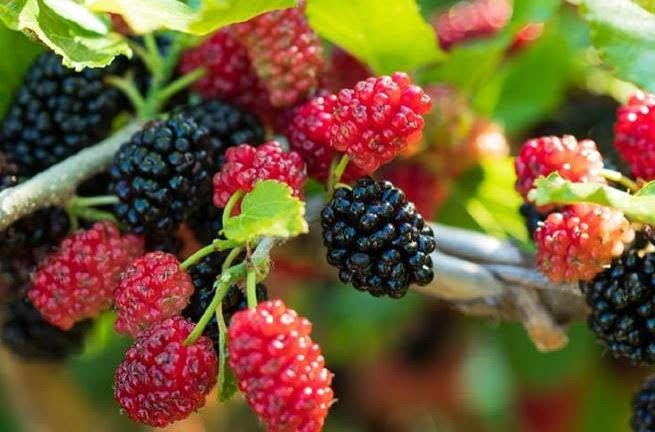Learn About Chinese Herbs -Sang Ye (Mulberry leaves)-
Mulberry leaves include mulberry white bark, mulberry fruit, and mulberry branches
This product is commonly used in traditional Chinese medicine. "Shennong's Materia Medica" is listed as a medium grade.
Alias: frost mulberry leaves.
Source: Morus alba L. of dried leaves. Mostly cultivated.
Origin: Produced in most parts of the country.
Trait identification: most of the goods have been broken. The complete leaves are ovate or broadly ovate, about 15 cm long, about 10 cm wide, the petiole is about 4 cm long, the base of the leaf is heart-shaped, the apex is slightly pointed, the edge is serrate, and the veins are densely pubescent. The old leaves are thicker yellow-green. The young leaves are thin and dark green. The texture is brittle and brittle, and it is prickly to hold. The fragrance is light and the taste is slightly bitter. It is generally believed that the quality of the post-frost pickers is good.
Main ingredients: contains isoquercetin, hyssosterone, a small amount of organic acids, adenine, choline, etc.
Pharmacological effects: antipyretic, expectorant, antitussive.
Taste: bitter, sweet and cold.
Meridians: lungs, liver meridians.
Function: Clearing wind and heat, cooling blood and brightening eyes.
Indications: wind-heat cold, cough and headache, red eyes.
Clinical application
(1) It is mostly used for the treatment of mild fever, cough, and red eyes (such as colds) caused by external wind and heat, and is often used with Ju Hua, Lian Qiao, etc., such as Sang Ju Yin, which is a spicy and cool light agent.
(2) It is used for the treatment of lung heat and wind-heat cough, especially for cough resulting from dryness in throat and dry cough, often with Pi Pa Ye, Mai Dong, Sha Shen, etc.
(3) It is used with black sesame seeds to treat dizziness, dizziness and headache from liver and kidney yin deficiency, which can brighten the eyes and mind. It is also used with Dan Pi and Dan Shen for the treatment of migraine. It is mostly taken as a pill.
Dosage: 6~12g.
Prescription example: Sang Ju Yin (from "Wen Bing Tiao Bian"): Sang Ye 9g, Ju Hua 9g, Ku Xing Ren 9g, Lian Qiao 12g, Bo He 3g (entered last) Jie Geng 6g, Sheng Gan Cao 3g, Lu Gen 18g, decoction in water.
Note: There are different varieties of mulberry trees, and their leaves are also different. as
The edges of ji-mulberry leaves have uneven coarse serrations and deep serrations.
The edges of the meng-mulberry leaf are coarsely serrated and the ends of the teeth have spiky tips.
Hua-mulberry is also known as gourd mulberry, the upper part of the leaf is sparsely coarse and hairy, the lower part is densely pubescent, and the edge has coarse blunt teeth. (Generic for medicinal herb products).
⭐⭐⭐⭐⭐⭐⭐ ⭐⭐⭐⭐⭐⭐⭐ ⭐⭐⭐⭐⭐⭐⭐
Mulberry white bark
Also known as Mulberry bark. It is the root bark of the mulberry tree with the outer bark removed. It is in the shape of a long, twisted plate, which is rolled inward in two sides to form a semi-cylindrical shape, and is about 3 mm thick. The outer surface is ivory-white, with a few reddish-yellow spots (uncleaned rough skin), and the inner surface is yellowish-white. It is easy to split longitudinally, more fibrous, like a hemp wisp but difficult to separate. Chewy and sticky. The fragrance is weak and the taste is slightly sweet. It is better to have white skin, thick skin, and no rough skin.
Preparation: shredded, used raw or with honey.
Taste: sweet and cold.
Meridian: enter the lung meridian.
Function: clear the lungs and relieve asthma, reduce swelling with water.
Indications: Lung fever and panting, edema buildup or diabetic, edema and abdominal distention.
⭐⭐⭐⭐⭐⭐⭐ ⭐⭐⭐⭐⭐⭐⭐ ⭐⭐⭐⭐⭐⭐⭐
Mulberry fruit
It is the dried fruit of the mulberry tree (polyanthrocarp). It is divided into two kinds, black and white, and the north is accustomed to mature black mulberries, and purple after drying. In the south, near-ripe fruits are used, both black and white, and the color is greener after drying.
Taste: sweet, sour, warm.
Meridians: into the heart, liver and kidneys.
Function: Nourish the liver and kidneys, nourish blood and brighten the eyes.
Indications: blood deficiency, deafness, dizziness, insomnia, constipation.
⭐⭐⭐⭐⭐⭐⭐ ⭐⭐⭐⭐⭐⭐⭐ ⭐⭐⭐⭐⭐⭐⭐
Mulberry branches
It is a young branch of the mulberry tree, brownish-yellow, with many light brown dots (skin holes), leaf marks and small buds. The texture is tough like rattan, the section is yellowish-white, and the center has a pith. The smell is light. It is better to have young branches.
Preparation: Slice, chew, raw.
Taste: bitter flat.
Meridian: into the liver meridian.
Function: clear away heat and dispel wind, and clear the channels.
Indications: joint pain, limb spasms, rheumatism and paralysis.
Case study: Infant rash
Patient: male, age 6 months and half
Chief complaints: fever, bloating and constipation 6 days ago. After inducing bowel movement, the fever is gone. However, now he defecates as soon as he eats. Four days ago, a red rash appeared all over his body.
TCM treatment: boiling Da Huang 10g and Lian Qiao 20g to make a bath, plus using Fengyang hand, foot and mouth Chinese medicine powder paste on Yongquan acupressure point.
Patient feedback: The patient slept well that night. The heat rash obviously got better the next day, and on the third day, it basically disappeared.
Disclaimer: All above articles are for reference only. If patients are interested, please consult a professional practitioner Traditional Chinese Medicine for a consultation.





